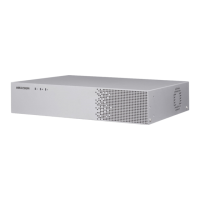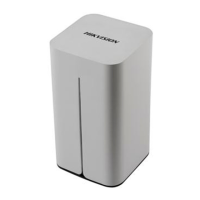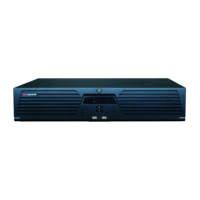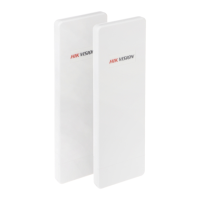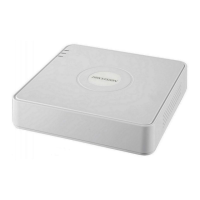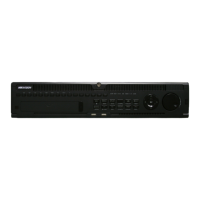Do you have a question about the HIKVISION DeepinMind Series and is the answer not in the manual?
| Series | DeepinMind Series |
|---|---|
| Manufacturer | HIKVISION |
| HDD Interface | SATA |
| Deep Learning Capability | Supported |
| Video Compression | H.265+/H.265/H.264+/H.264 |
| Max. Incoming Bandwidth | Varies by model |
| HDD Capacity | Varies by model |
| Network Interface | RJ-45 10/100/1000 Mbps self-adaptive Ethernet interface |
| Alarm Interface | Varies by model |
| Power Supply | 100 to 240 VAC |
| Operating Temperature | -10 °C to 55 °C (14 °F to 131 °F) |
| Operating Humidity | 10% to 90% |
Provides instructions for using and managing the Product.
Lists trademarks and logos mentioned in the manual.
Outlines the terms and conditions for product use and company liability.
Details FCC compliance for the device, including operational conditions.
Confirms product compliance with EU directives like EMC and RoHS.
Defines symbols used in the document to indicate danger, caution, or notes.
Provides essential safety precautions for operating and maintaining the device.
Offers advice on proper installation, ventilation, and safe handling practices.
Guides the user through the initial activation process using local menu, SADP, or web browser.
Explains how to configure TCP/IP settings for network operation.
Details how to manage and initialize storage media like HDDs.
Describes the process of adding network cameras for live video and recording.
Covers configuration for accessing the platform via ISUP and Guarding Vision.
Allows customization of camera image settings like brightness, contrast, and exposure.
Explains how to set up On-Screen Display (OSD) for cameras, including date/time and name.
Details how to conceal parts of the image for privacy protection.
Enables backup and restoration of IP camera configuration settings.
Provides steps for remotely upgrading IP camera firmware.
Introduces the live view interface and basic operations.
Guides on customizing the display layout for multiple camera views.
Sets up automatic camera switching in different display modes.
Explains how to view real-time facial recognition and stranger recognition results.
Covers configuring recording parameters, including stream types and encoding.
Details settings for main stream, sub-stream, frame rate, resolution, and bit rate.
Introduces playback functions, including normal video, smart search, and custom search.
Describes various operations during playback, such as switching streams and editing clips.
Configures basic event alarms like motion detection, video loss, and tampering.
Manages Video Content Analysis (VCA) events such as loitering and people gathering.
Sets up schedules for when event detection is active.
Defines actions to be taken when an event is triggered, like alarms or notifications.
Configures VCA engines for specific working modes like Perimeter Protection or Face Capture.
Sets up alarms based on comparing detected faces with a specified library.
Configures detection rules for line crossing, intrusion, and region entry/exit.
Enables detection and capture of human bodies in the scene.
Detects vehicles for traffic monitoring and captures license plates.
Allows detailed search of videos and pictures based on various criteria.
Exports files for backup purposes to USB devices or eSATA HDDs.
Facilitates searching based on smart analysis results like human body or vehicle detection.
Manages storage devices like SSDs and HDDs, including initialization and SMART detection.
Configures HDD groups, properties (R/W, Read-only, Redundant), and quotas.
Explains how to create and manage disk arrays (RAID) for data redundancy.
Sets up connection to POS machines/servers for transaction message overlay and event alarms.
Configures how POS transaction data is displayed over live video.
Defines actions to be taken when a POS event occurs, such as recording or notifications.
Configures the device to operate in hot spare mode for system redundancy.
Links working recorders to the hot spare device for failover.
Monitors the status of working recorders and the hot spare system.
Sets up Dynamic DNS services for remote network access.
Configures port mapping (UPnP or manual) for remote access via routers.
Configures email notifications for events like alarms or password changes.
Enables ONVIF protocol for connecting third-party cameras.
Manages user accounts, including adding, editing, and setting permissions.
Enhances security by configuring password policies, GUID export, and security questions.
Provides methods to reset forgotten passwords using GUID, security questions, or reserved email.
Configures general device settings like language, output standard, and device name.
Sets up time synchronization using manual or NTP methods, and DST.
Monitors network traffic, tests delay/packet loss, and exports network packets.
Performs maintenance on storage devices, including bad sector detection and SMART checks.
Details firmware upgrades via local backup devices or FTP servers.
Configures security measures like RTSP authentication, ISAPI, and HTTP authentication.
Defines technical terms used throughout the manual.
Provides solutions to common issues and questions encountered with the device.
